I’ve been following J. Paul Moore and his incredible moss lawn for over a year on Instagram (@jpaulmoorephoto). He is known by many as the Moss Man for his unique moss lawn in his back yard and his extensive knowledge of moss. Not just known for his moss lawn, Paul has been in the photography business for over thirty years photographing gardens, landscapes, nature, and architecture. His photography is stunning, and I love how he always finds an original way to capture the nature around him. He also used to own and run a garden center with his parents. Paul has a host of native plants on his twelve-acre property and has an educator heart, frequently giving garden tours and talks.
My husband (also named Paul) and I went to visit this moss lawn at its prime – moss apparently looks best around January – and were treated to a tour of the garden. Here is part of that tour and conversation, lightly edited and condensed for clarity.
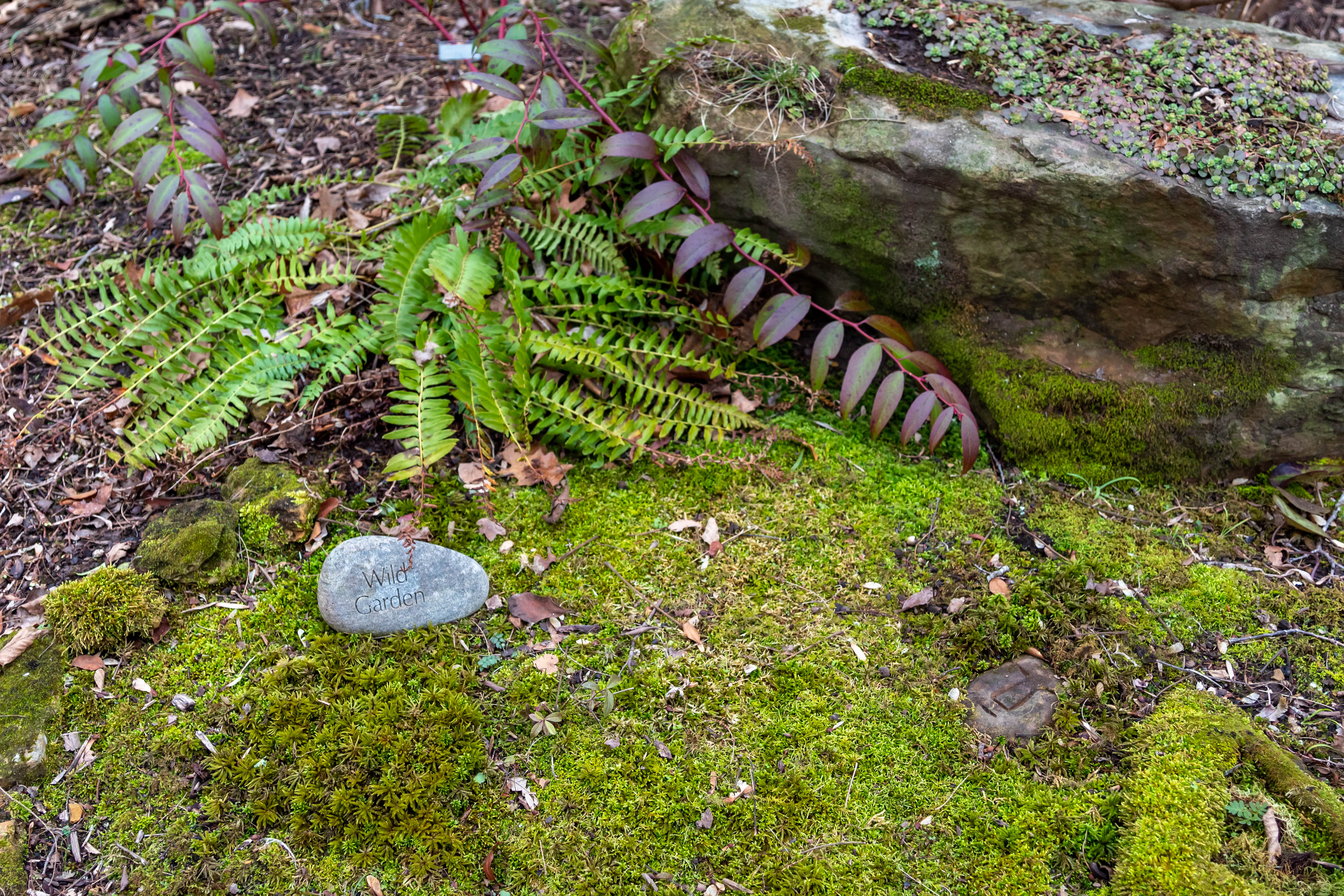
We began with a moss garden that Paul started to showcase different types of moss. You’ll also see a fetterbush, fern, and a stone face made by his cousin. One thing I am immediately struck by in his garden is how much green there is. As we go further on the tour, despite how many deciduous trees and shrubs and herbaceous perennials he has, there is so much green that the garden is still beautiful in the winter. Filing that away for later.
One particular kind is called tree moss because it looks like a little conifer tree. “You can trim the tips and distribute them and they’ll sprout up.”

Getting to the main moss lawn, Paul pointed out that it is seven years old. “I started with the first patch – pulled up what dead and dying grass was there that summer and just keep the debris off of it. Moss does not like competition.”
“If you go hike in the woods here, and this is a prime example, see that little hump? [points to a decaying log covered in moss] A lot of times in the woods a tree will fall and rot and it’ll leave that hump. The leaves will fall off of that, and moss is the first thing that will grow. See, there’s not really any competition. Any place you have bare soil that stays bare for any length of time it’ll get the moss.”
Shelly: So do you take patches and transplant them?
Paul: This one [original patch] I let all fill in on its own.
S: You just let nature do its thing?
P: It’s slow. But, you can buy moss. Here, I’ve patched all this in. This is fern moss (Thuidium delicatulum). You can see they look like little miniature ferns.
S: Do they all grow and spread at roughly the same rate, or do you find big differences in the types?
P: It’s all pretty slow. This one is faster than most I guess but there’s a variety in here called Brachythecium. It seems to be a little faster. It’s got a beautiful texture to it and almost has a variegated color to it. This variety here is called Bryoandersonia illecebra. It looks like little worms.
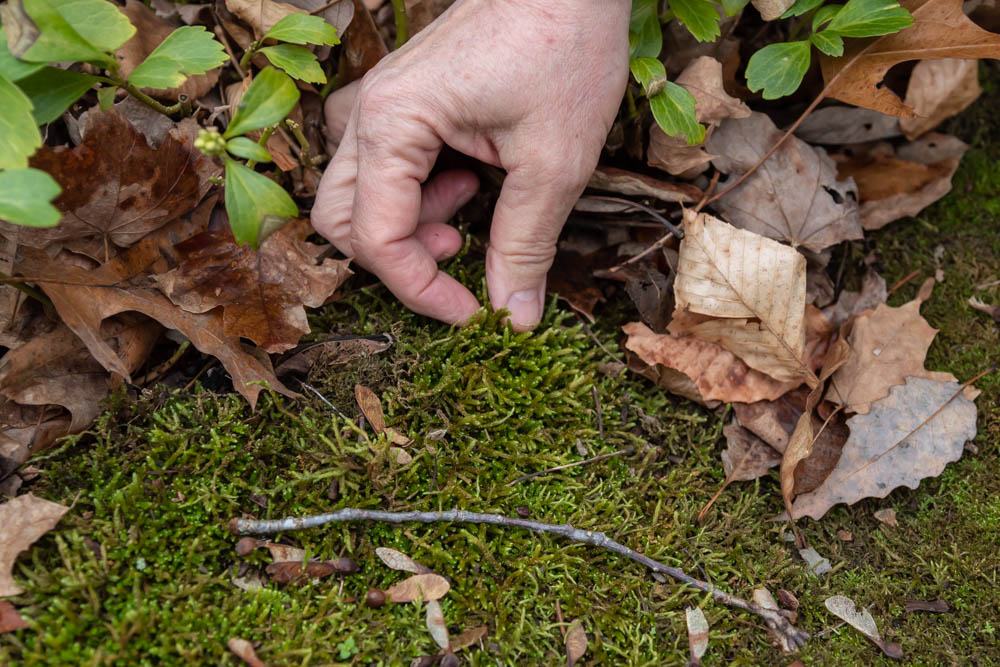
P: Here I’ve filled in some different kinds because I’m doing this to experiment. I brought a bunch of samples in for my talk at Warner Park, so I just took the trays and planted them in there. I keep the screen on it to keep the critters out of it. And these are some where you can tell I’ve patched in some other varieties.
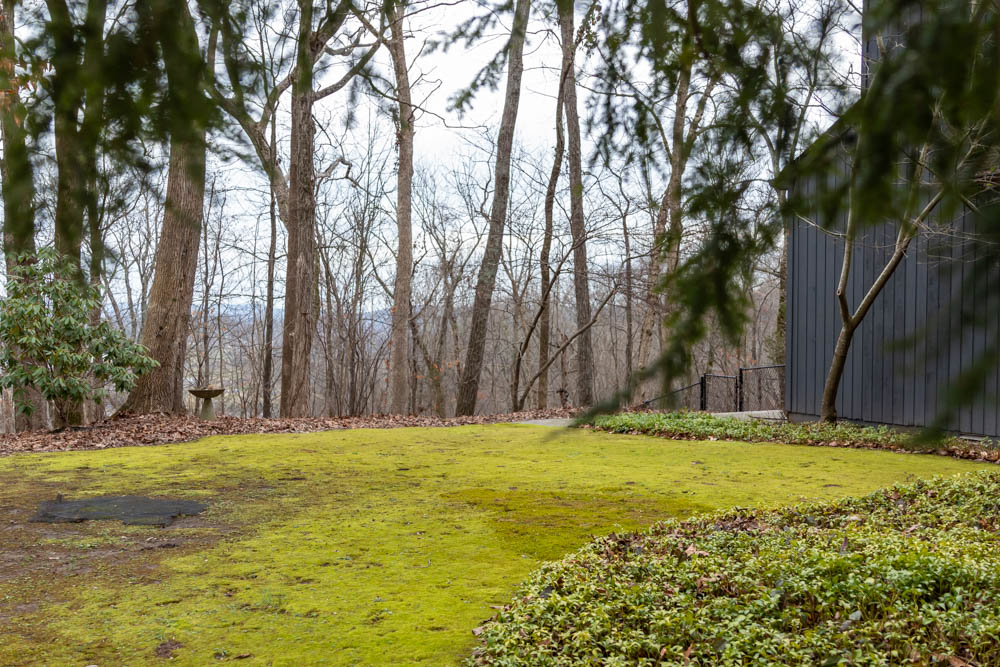
P: My soil up here is naturally acidic soil, which you don’t particularly have to have for the moss because the parks are full of it and that’s alkaline soil.
S: Does it take much foot traffic?
P: Yeah, you can walk on it all day, you just can’t scuff your feet or play football on it. It actually likes to be walked on. It breaks the little stems apart and helps spread it. Sometimes I’ll be out here and I’ll turn a certain way and it’ll twist up. I’ll just pack it right back down because moss has no roots. It has these root-like structures called rhizoids — they just kinda stick to the ground.
P: My daughter has a health consulting business and they did yoga as part of one of their programs. We did moss yoga up here during the summer.

Shifting gears from the moss lawn, we talk about some of the plants he has around the outside of his home and on his property. Most of the plants on the property are native plants, and we walked around identifying the various specimens — sometimes having a sniff of the stem or leaves. I’ll save those for another post when they’re at their peak bloom! Right now, one of the few green things besides the moss is the pachysandra behind his house.
P: For the first time ever the deer got up here and ate the tips off the pachysandra.
S: They must have been hungry!
P: It’s been here for thirty years and they’ve never eaten it. People say why do you have this if you have native plants? I say well this is one of the first things I planted before I really knew about natives, and secondly this is where my box turtles go to cool off in the summer.
P: The box turtles come up and they get in those bird baths to cool off and they’ll come in here to get out of the heat and breed in there.
S: So they just come up the hill?
P: I’ve seen them, they can travel a pretty good distance. I recognize the shell markings — they’ve been coming up for years. I call the other bird bath on the other side, which is a little deeper, my box tub — box turtle hot tub. I’ve seen four or five at a time in there.
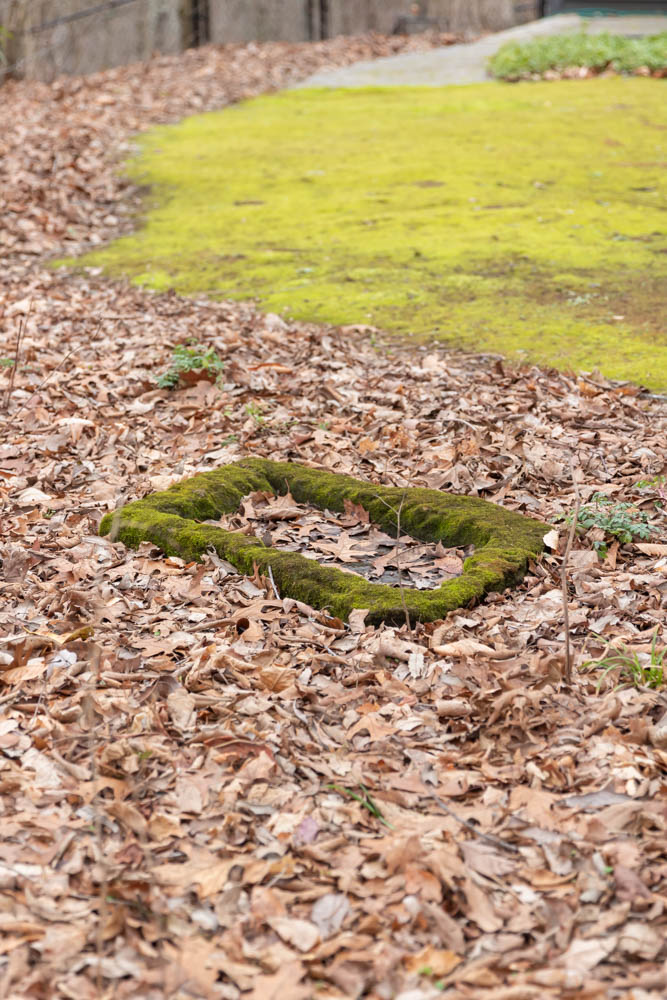
S: Do you have a lot of wildflowers?
P: Oh yeah tons of wildflower. This whole area is filled with goldenseal, lots of bulbs –let me see if this blue-eyed mary is up. I’ve got an endangered species over here. All these little leaves are blue-eyed mary — a beautiful little blue and white flower. It just carpets the area over here. It’s easy to grow but it’s hard to find to get a start.
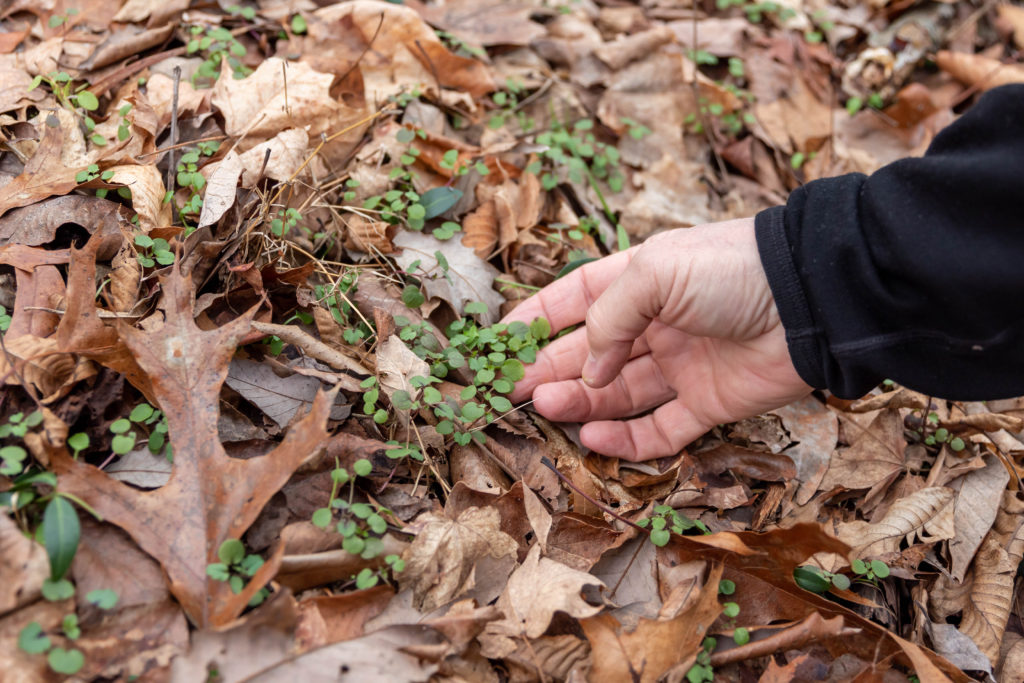
S: Did you plant a lot of the wildflowers?
P: I planted almost everything up here on this hill. Spring beauty, a tiny little wildflower that carpets the ground in the spring it has that, and toothwort, two very common, but not very impressive wildflowers in terms of profusion up here. But every other wildflower pretty much I’ve planted. we’ve been here for thirty years. We’re registered now with United Plant Savers as a botanical sanctuary.
S: Did you apply for that?
P: Yeah you have to apply, tell them what you’re doing. You have to commit to doing education, and garden tours, which I do anyway. I’m not doing as many full-fledged garden tours because of the time and money involved. When I had my garden center business I was pretty much here all the time and working on it, but now to get ready for something to the level of my satisfaction requires about $1000 worth of labor to start whipping things into shape. You know, mulching paths and all that. You know people say “we don’t need you to do all that” and I say that’s like inviting someone to your house and your house not being cleaned up. That just doesn’t work in my world.
P: We’ve got twelve acres here so nobody can build anywhere near us which is nice. It’s hard to believe how much it transforms when the leaves come out and everything starts happening. It’s a little bit of paradise for sure.
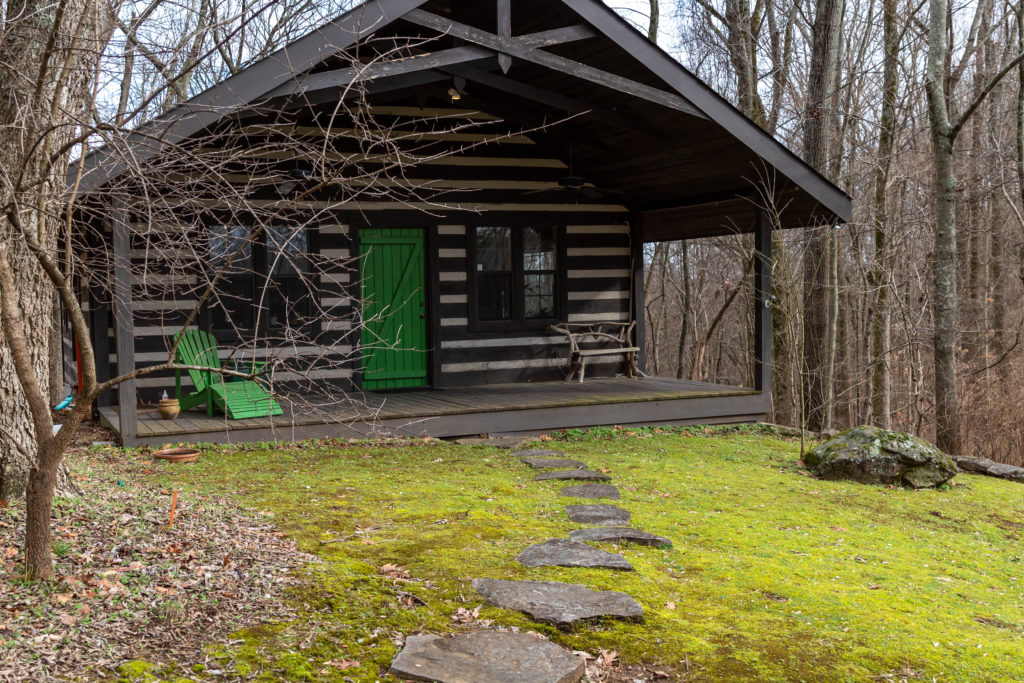
Indeed it is.
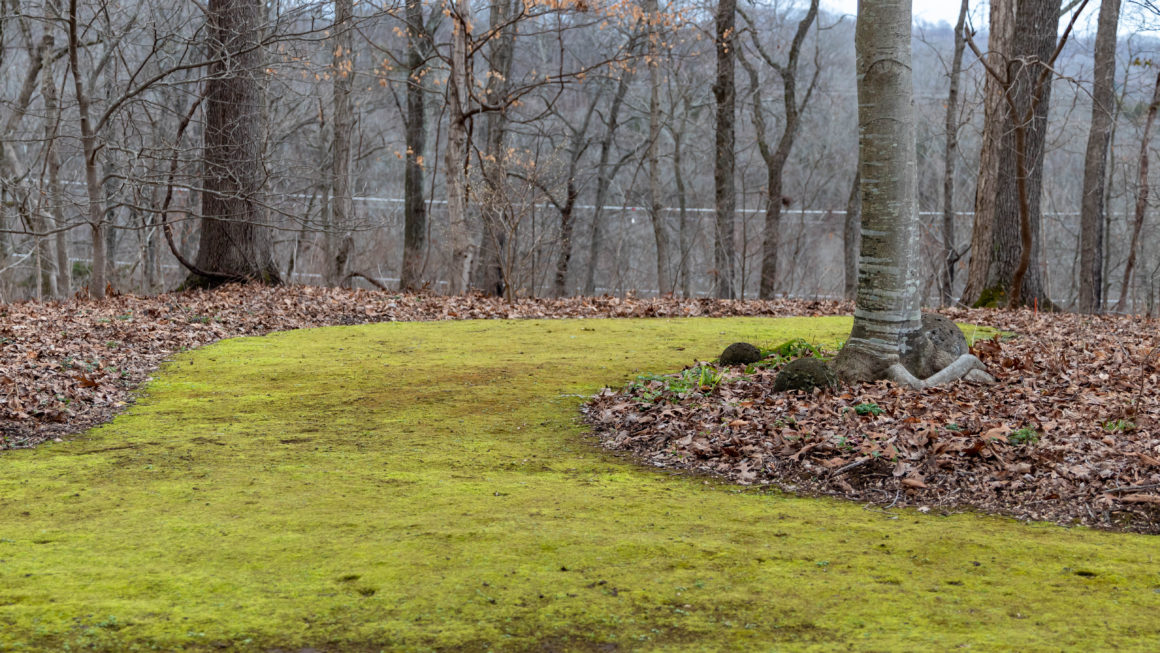
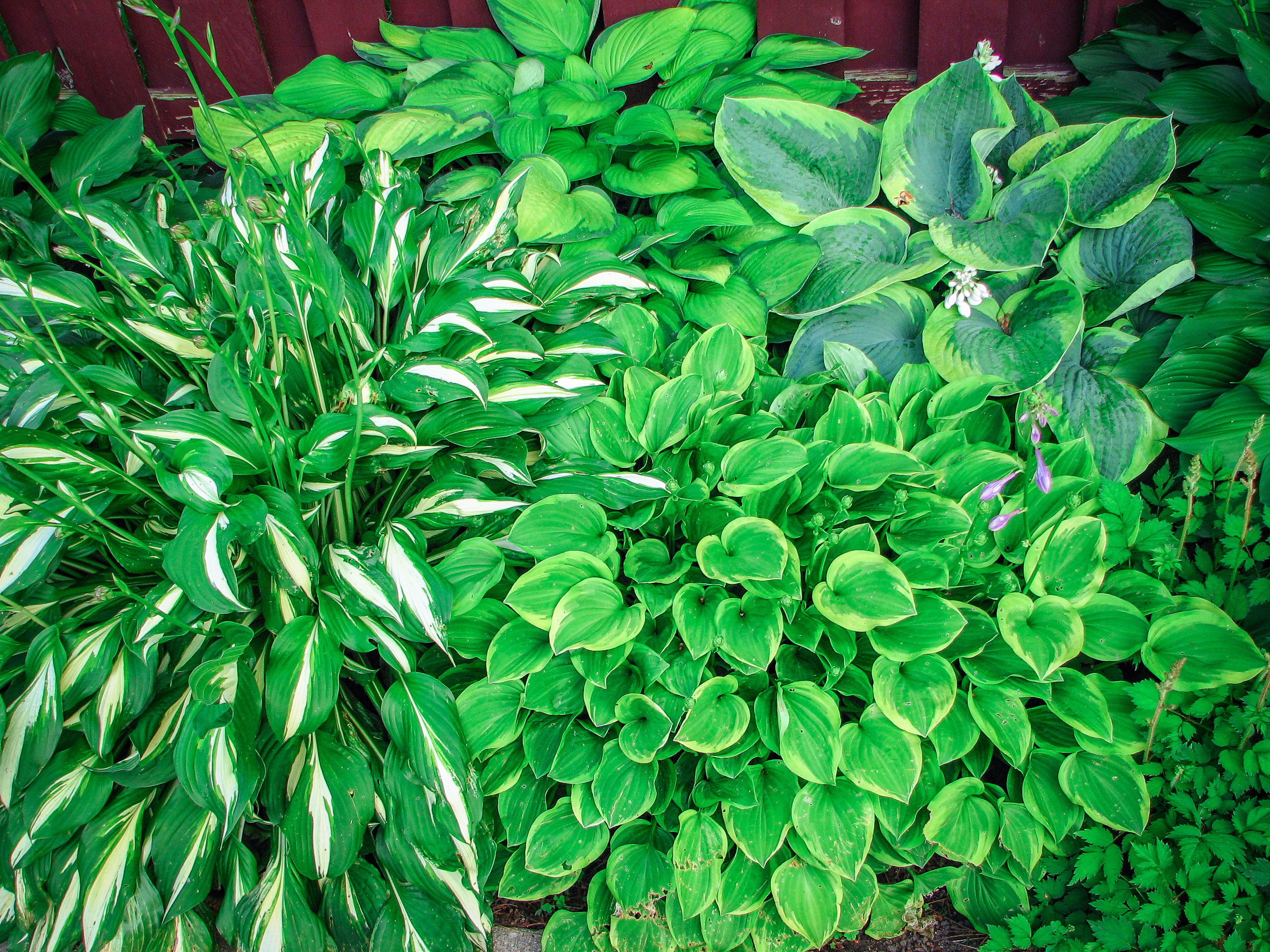
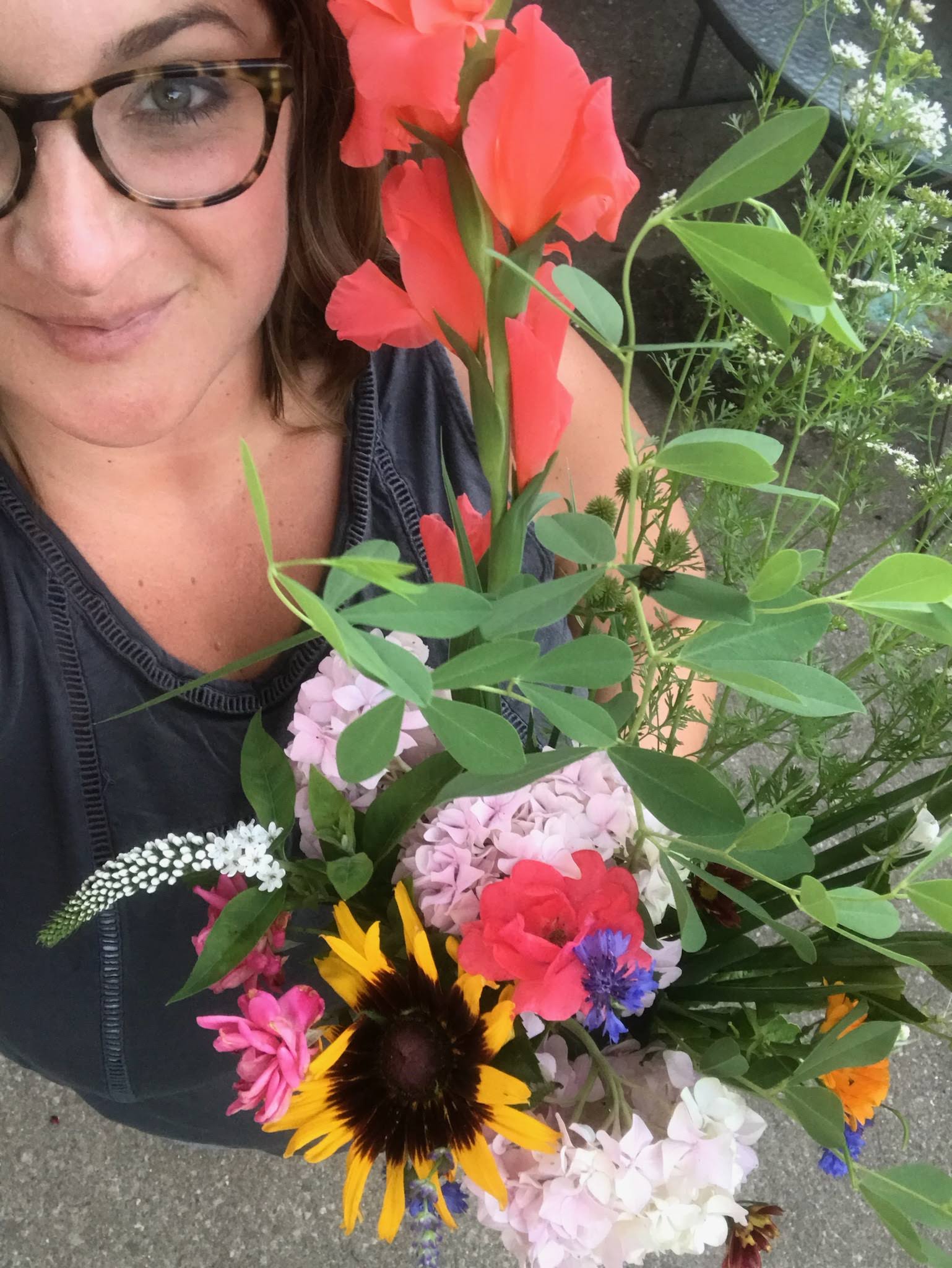
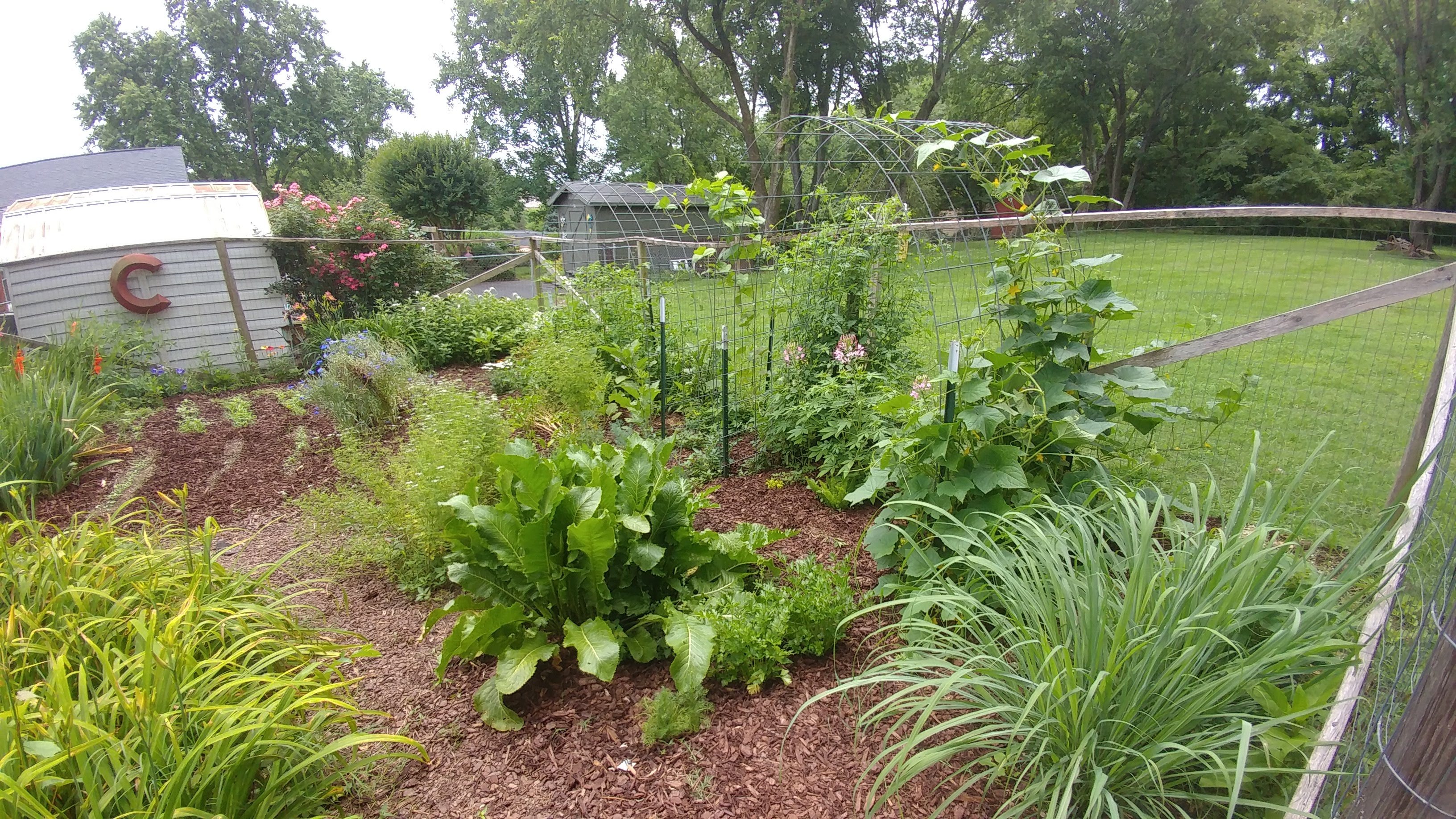

Definitely a botanical sanctuary! Love hearing about the box turtles, too! Great interview, Shelly.
That was a fun story! Thank you so much, Jordan!